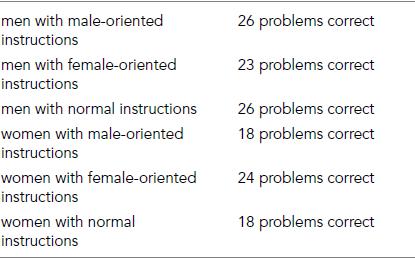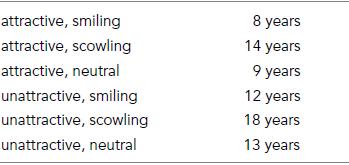For each of the following studies: a. Identify the independent variables, the levels of each, and the
Question:
For each of the following studies:
a. Identify the independent variables, the levels of each, and the dependent variable.
b. Place the data into the correct cells of a factorial matrix and draw a graph of the results.
c. Determine if main effects and/or interactions exist and give a verbal description of the study’s outcome.
For the purposes of the exercise, assume that a difference of more than 2 between any of the row, column, or cell means is a statistically significant difference.
1. A researcher is interested in the effects of ambiguity and number of bystanders on helping behavior. Participants complete a questionnaire in a room with zero or two other people (i.e., bystanders) who appear to be other subjects but are actors in the study. The experimenter distributes the questionnaire and then goes into the room next door. After 5 minutes, there is a loud crash, possibly caused by the experimenter falling. For half of the participants, the experimenter unambiguously calls out that he has fallen, is hurt, and needs help. For the remaining participants, the situation is more ambiguous; the experimenter says nothing after the apparent fall. In all cases, the actors (bystanders) do not get up to help. The experimenter records how long it takes (in seconds) before a participant offers help. Here are the four conditions and the data:
2. In a maze learning study, a researcher is interested in the effects of reinforcement size and reinforcement delay. Half of the rats in the study are given a 1 cm square block of cheese upon completing the maze; the other half gets a 2 cm square block. Within each reinforcement size group, half of the rats are given the cheese on arrival at the goal box and half waits for the cheese for 15 seconds after their arrival. Hence, there are four groups and the data (dependent variable is number of errors during 10 trials):
3. A cognitive psychologist interested in gender and spatial ability decides to examine whether gender differences in a mental rotation task (see Chapter 4 for a reminder of this task) can be influenced by instructions. One set of instructions emphasizes the spatial nature of the task and relates it to working as a carpenter (male‐oriented instructions); a second set of instructions emphasizes the problem‐solving nature of the task and relates it to working as an interior decorator (female‐oriented instructions); the third set of instructions is neutral. An equal number of men and women participate in each instructional condition. Here are the six conditions and the data:
4. A forensic psychologist wishes to determine if prison sentence length can be affected by defendant attractiveness and facial expression. Subjects read a detailed crime description (a felony breaking and entering) and are asked to recommend a sentence for the criminal, who has been arrested and found guilty. A photo of the defendant accompanies the description.
Half the time the photo is of a woman made up to look attractive, and half the time the woman is made up to look unattractive. For each type of photo, the woman is smiling, scowling, or showing a neutral expression. Here are the conditions and the data:
Step by Step Answer:






